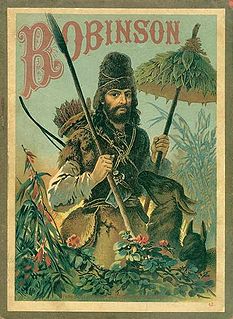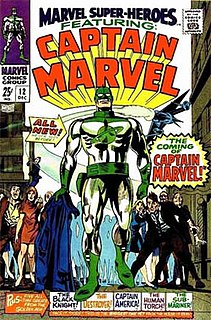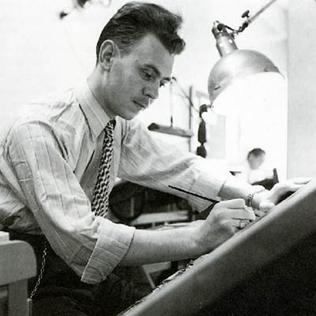Related Research Articles

Galactus is a fictional character appearing in American comic books published by Marvel Comics. Formerly a mortal man, Galactus is a cosmic entity who originally consumed planets to sustain his life force, and serves a functional role in the upkeep of the primary Marvel continuity. Galactus was created by Stan Lee and Jack Kirby and first appeared in the comic book Fantastic Four #48, published in March 1966.

Murray Leinster was a nom de plume of William Fitzgerald Jenkins, an American writer of science fiction and alternate history literature. He wrote and published more than 1,500 short stories and articles, 14 movie scripts, and hundreds of radio scripts and television plays.
Arthur Bertram Chandler was an Anglo-Australian mariner-turned-science fiction author.

Dallas McCord "Mack" Reynolds was an American science fiction writer. His pen names included Dallas Ross, Mark Mallory, Clark Collins, Dallas Rose, Guy McCord, Maxine Reynolds, Bob Belmont, and Todd Harding. His work focused on socioeconomic speculation, usually expressed in thought-provoking explorations of utopian societies from a radical, sometime satiric perspective. He was a popular author from the 1950s to the 1970s, especially with readers of science fiction and fantasy magazines.
Tower Comics was an American comic book publishing company that operated from 1965 to 1969, best known for Wally Wood's T.H.U.N.D.E.R. Agents, a strange combination of secret agents and superheroes; and Samm Schwartz's Tippy Teen, an Archie Andrews clone. The comics were published by Harry Shorten and edited by Schwartz and Wood. Tower Comics was part of Tower Publications, a paperback publisher at that point best known for their Midwood Books line of soft-core erotic fiction aimed at male readers.

John V. Romita, is an American comic book artist best known for his work on Marvel Comics' The Amazing Spider-Man and for co-creating characters like The Punisher and Wolverine. He was inducted into the Will Eisner Comic Book Hall of Fame in 2002.

Fireball XL5 is a British science fiction themed children's television show following the missions of spaceship Fireball XL5, commanded by Colonel Steve Zodiac of the World Space Patrol. The show aired for a single 1962–63 series, produced by husband and wife team Gerry and Sylvia Anderson through their company APF, in association with ATV for ITC Entertainment, and first transmitted on ATV on Sunday 28 October 1962. While developing his new show, Anderson thought a brand of motor oil – Castrol XL – had an interesting sound. A phonetic change created the name "Fireball XL", with the "5" added since the title seemed rather flat without the numeral.

Robinsonade is a literary genre that takes its name from the 1719 novel Robinson Crusoe by Daniel Defoe. The success of this novel spawned so many imitations that its name was used to define a genre, which is sometimes described simply as a "desert island story" or a "castaway narrative".
Arnold Drake was an American comic book writer and screenwriter best known for co-creating the DC Comics characters Deadman and the Doom Patrol, and the Marvel Comics characters the Guardians of the Galaxy, among others.

The Stranger is a fictional character appearing in American comic books published by Marvel Comics.

Marvel Super-Heroes is the name of several comic book series and specials published by Marvel Comics.

Many works of fiction have featured UFOs. In most cases, as the fictional story progresses, the Earth is being invaded by hostile alien forces from outer space, usually from Mars, as depicted in early science fiction, or the people are being destroyed by alien forces, as depicted in the film Independence Day. Some fictional UFO encounters may be based on real UFO reports, such as Night Skies. Night Skies is based on the 1997 Phoenix UFO Incident.
TV Comic was a British comic book magazine published weekly from 9 November 1951 until 29 June 1984. Originally started by Beaverbrook, it was published by Polystyle Publications from 1960 and featured stories based on television series running at the time of publication. The first issue ran to eight pages, with Muffin the Mule on the front cover. It also featured many other TV favourites of the day, including Mr. Pastry, Larry the Lamb, Tom Puss, Prince Valiant, Jack & Jill and Prudence Kitten.

James Winslow Mortimer was a Canadian comic book and comic strip artist best known as one of the major illustrators of the DC Comics superhero Superman. He additionally drew for Marvel Comics, Gold Key Comics, and other publishers.
Kenneth Franklin Weaver enjoyed a substantial 33-year career as a writer for the National Geographic Magazine. His prolific tenure with National Geographic produced articles encompassing a range of subjects until he retired as Senior Science Editor in 1985.
John Edmond Sparling, better known as Jack Sparling, was a Canadian comics artist.
John Thomas Phillifent was an English electrical engineer and author of science fiction and fantasy. He wrote as John T. Phillifent and under the pen name John Rackham. Most of his work was published as by Rackham, the main exceptions being three novels related to The Man from U.N.C.L.E. series, his short stories published in the magazine Analog, and a number of late novels. Most of his novels were issued together with the works of other authors as Ace Doubles.

Sidney "Sid" Greene was an American comic book artist known for his work for a host of publishers from the 1940s to 1970s. As an inker on DC Comics series including Batman, Green Lantern, Justice League of America and The Atom, he helped to define the company's house style for its 1960s Silver Age superheroes.
Belmont Books, also known as Belmont Productions, was an American publisher of genre fiction paperback originals founded in 1960. It specialized in science fiction, horror and fantasy, with titles appearing from 1961 through 1971. The company published books by such notable authors as Philip K. Dick, Philip José Farmer, Lin Carter, Robert Bloch, Frank Belknap Long, and Gardner Fox. Belmont was owned by the same company that owned Archie Comics.
Tower Publications was an American publisher based in New York City that operated from 1958 to c. 1981. Originally known for their Midwood Books line of erotic men's fiction, it also published science fiction and fantasy under its Tower Books line and published comic books in the late 1960s under its Tower Comics imprint. In the early 1970s, Tower acquired paperback publisher Belmont Books, forming the Belmont Tower line. Archie Comics' cofounder Louis Silberkleit was a silent partner in Tower's ownership; longtime Archie editor Harry Shorten was a major figure with Tower in all its iterations.
References
- 1 2 Wells, John (2015). American Comic Book Chronicles: 1960-64. TwoMorrows Publishing. pp. 152–153. ISBN 978-1605490458.
- ↑ Holland, Steve (2009). Sci-Fi Art: A Graphic History. Lewes. pp. 102–103. ISBN 9781905814398.